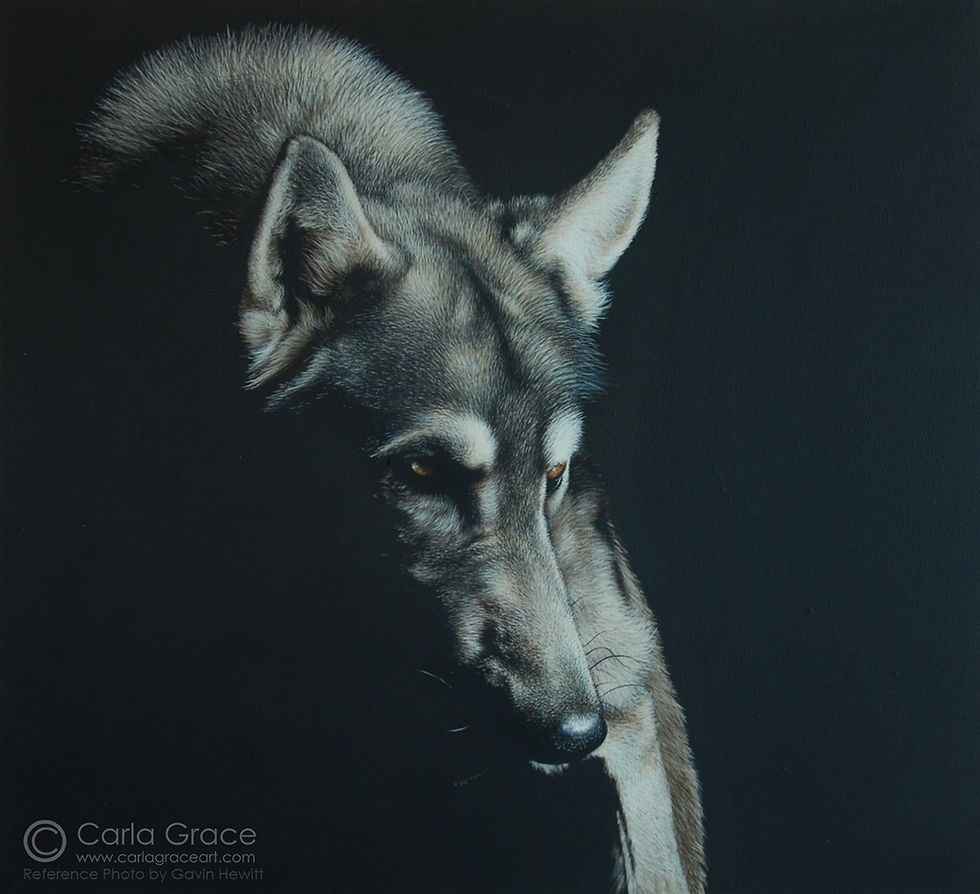How to paint with colouring pencils: make your drawings hyper-realistic with these techniques.
- Carla Grace
- Aug 3, 2015
- 4 min read
I love working in coloring pencils! I can get right into the details of what I see in the photo and can create as much variation in textures and tones as I dare imagine.
It takes a bit of time to get to know the image, but once you land on the color pallet for your image then it’s away with the wind!! Here are some things I learnt along the way about working with coloring pencils that I'm hoping will be a bit of something sweet to help you create your masterpieces:

(commission of a turtle I did in 2014)
1. Work on an off-white paper.
Choosing the paper for your picture will make all the difference to how you are able to layer all the colors. I work on a pastel paper, anything that has a bit of tooth in it so that when the wax starts to build up, it wont become a slippery mess. I also choose an off-white, usually a colour that reflects the underlying tone of the entire piece. This comes into handy later on.
2. Construct the outlines in a VERY LIGHT PENCIL!
Don’t use a pencil with a lead softer than a B/2B... I like to use HB. Get rid of all the sketchy lines on the paper, because when you go to add color, the wax from the coloring pencils (especially the lighter tones) pick up the graphite and it becomes mixed in the color. It is not a train smash if this happens though, grab your eraser and rub it out. You will just have to start that section again.

(Progress of the turtle, you can see the thick white base and the subsequent light layers building on top of that)
3. Put down a thick base layer of white pencil.
I like to put down a layer of white coloring pencil. This is why I have to use an off white paper so that I can see where I have colored in. This layer of white is so vitally important when layering the colors on top as it separates the colors from the grit of the paper. This is crazy handy when you make a mistake with a strong color (the white layer kept the color off the paper, so erasing it means there is no or minimal scarring on the paper). I also use the white to blend colors together, it is a bit hazy, but is all part of the layering. The more patient you are with this process the better your result!
4. Use a scalpel for the fine details.
That handy layer of white I told you about just before, here is another reason why it is my prince charming of this whole drama: it allows you to use a scalpel to scratch away the layers of colorful wax pencil you have just layered. Yes, this means those fine hairs, those annoying little details you would otherwise have to draw around painfully without the layer of white, you can do those during the process and at the end to give your work the POW! that it needs. This is also why I use a paper that is the underlying tone of the whole image, you can scratch away even the layer of white right down to the color of the paper. So good!

5. Work from light to dark.
Darker tones are harder to erase than lighter ones, they scar the paper a lot more, and can make it rather muddy to work over.

(A Commisison of a fox, a greate example of how handy the gel pen is in the process)
6. Have a gel pen handy.
Like in the fox picture I did, those very white hairs are impossible to get with the scalpel. So I used a gel pen! After scratching the guideline with the blade, I carefully went over it with the pen, allowing the ink to flow onto the paper to give it that stark white that it needed to look 3D. Using gel means you have a window of about 30 seconds to blot away any excess or incorrect lines, you can also treat it like paint and using your finger or a small dry paint brush, blend it into the wax. It is very hard to layer wax pencil on top of the gel though, so make sure you are only using it as a final layer.
7. Use chalk pastel if you want your background to be a smooth, seamless basic tone.
Better to just stick with the paper color, but if (like in the turtle drawing) you want to add a simple background, rather then spending hours of painful coloring, use calk pastels! Best to practice with this a bit first to make sure that you are using the right tones, but the chalk wont adhere to the wax crayon, so you don’t need to worry about the dust effecting your image. HOWEVER! If you have done a lot of scratching with the blade, the chalk will settle into those crevices and will not go away! (I learnt this the hard way). So be careful not to blow the dust over your picture. You will cry. Make sure you spray this layer with a fixtive several times. This will dull your pastel, but the thicker the layer of pastel the better the overall look. So keep the background basic and simple. No need to over complicate it. Less is more in this case.
It works for me! Hopefully you find something useful in there!
Much love!
xx Carla Grace




Comments